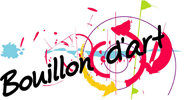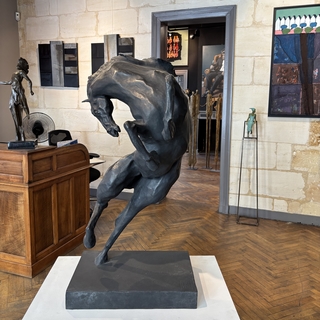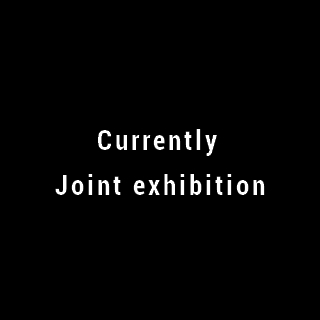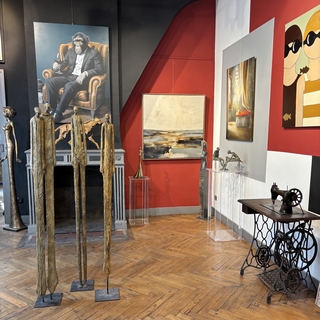0
Product
Products
No products
0€
Total
Product successfully added to your shopping cart
Quantity
Total
There are 0 items in your cart. There is 1 item in your cart.
Total products
(tax incl.)
Total shipping (tax incl.)
Free shipping!
Total
(tax incl.)

Monumental works of art in companies, when support for artists becomes a corporate communication tool
Art has many benefits for companies, especially in terms of internal and external communication. The use of art in the company can help to strengthen the brand image, stimulate creativity and improve the working environment.
First of all, art can help to strengthen the company's brand image. Artwork can be used to create a strong visual identity, which can be used on the company's communication materials. Art can also be used to tell the company's story and communicate its values to customers and employees.
In addition, art can stimulate creativity and innovation within the company. Artwork can inspire employees and encourage them to think outside the box. In addition, art can be used to encourage collaboration between different departments within the company and to promote the exchange of ideas.
In addition, art can improve the working environment by creating a more pleasant and inspiring space. Artwork can help reduce employee stress and anxiety, which can lead to increased productivity and job satisfaction. Art can also help create a more inclusive environment by reflecting cultural diversity and encouraging tolerance and respect.
Finally, the use of art in a company's communication can also contribute to its commitment to society by supporting living artists and encouraging cultural diversity. This can strengthen ties with local communities and attract like-minded customers.
In sum, the use of art in business can have many benefits, both in terms of communication and the working environment. By integrating art into their communication strategy and work environment, companies can strengthen their brand image, stimulate the creativity of their employees and improve their productivity and satisfaction.
How to finance public monumental works of art : The 1% artistic
The 1% art scheme was created in France in 1951 and requires project owners to devote 1% of the cost of construction or renovation work on a public building to the creation of a work of art. The aim of this measure is to encourage the dissemination of contemporary art in the public space and to support artistic creation in France.
The choice of the work is made by a consultative commission composed of experts and representatives of the administration, art and architecture. The artist is then selected by this same commission and must create a work that blends harmoniously with the building's environment.
The 1% art scheme has led to the creation of many remarkable works of art, such as César's sculpture "Le Pouce" in front of the Georges Pompidou Centre in Paris or Fernand Léger's frescoes in the Le Corbusier high school in Marseille.
This scheme is therefore a real support to contemporary artistic creation and an enrichment of the French cultural heritage. Moreover, it makes art accessible to all and encourages the emergence of talent in an original and stimulating setting.
How to finance private monumental works of art : Tax exemption or tax reduction for the purchase of works of art
A company that purchases an original work of art before 31 December 2025 may deduct the purchase price from its taxable income. To benefit from this tax advantage, the company must be subject to corporation tax or, for companies and individual entrepreneurs, to income tax in the BIC category.
What role does the Bouillon d'art Gallery play?
The Bouillon d'art gallery has already produced public monumental works, for example for the minicipality of Talence and private works for the headquarters of the la compagnie fiduciaire group.
How did it happen?
The client drew up specifications for the artistic project, mentioning its human values, its communication strategy, the target audience, the technical characteristics and constraints, the budget and the deadlines, for which it then issued a call for tenders.
Galerie Bouillon d'art's response.
We identified the client's needs and expectations and sometimes had certain points specified. An in-depth study enabled us to make an artistic pre-selection aimed at identifying the artists capable of responding to the request.
We drew up a set of specifications in line with the company's values and met all the requirements of the invitation to tender.
The various elements of the specifications submitted:
1. Definition of objectives: Reminder of the client's needs
2. Artistic selection: artist chosen and motivations, presentation of the work and arguments
3. Establishment of technical specifications: dimensions, materials, colours and techniques used.
4. Description of the creative process: conception and realisation, stages, resources required.
5. Establishment of the timetable: deadlines for each stage of the design process, delivery date
6. Pre-project presentation
7. Budgeting: costs associated with production, materials, delivery and installation
Project monitoring
The Bouillon d'art gallery is the project manager of the artistic creation, it is the link between the client and the artist, the interlocutor of the project managers and architects, the spokesperson of the artist, the guarantor of the conditions of realization and delivery. We participate in meetings, are on site and also supervise the installation
Our strengths
- Significant experience in building, building trades and coordinators.
Proven experience in human resources, mastery of internal and external communication of a project / company through a work of art.
Experience in project management and management of public funds
A privileged relationship with artists.



